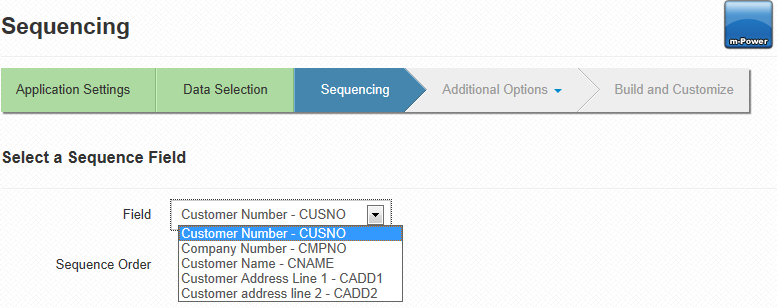Sequencing
Sequencing is the last required step in the build process. This is a screenshot of the Sequence Field Selection screen:
All of the fields that you selected through the Table/Field Selection specification will appear in this drop-down list.. Sequencing will allow you to order your application by any field(s) in either ascending or descending order. To create a sequence key, select the field from the drop-down, then select ascending or descending, and then click "Save". You can choose as many sequence keys as you like. The application will be sequenced in the order that you selected the sequence keys.
Once you have selected all sequence fields. You are ready to Build your application! To do so, return to the application menu, and click build.
Sequencing Differences By Application Type
Depending on whether your application is a retrieval, report, summary, or maintainer, the Sequencing specification will look and act differently.
Retrieval: Sequencing in a retrieval is the most straightforward, and will behave as above.
Report: If your application is a report, you will see a Subtotal field in the Sequencing specification. If you want to allow a field to be subtotaled, select yes before adding the key. Now, when the application is run, the end-user can select subtotaling as desired.
Summary: The Sequencing specification in summaries is similar to the Sequencing specification in Reports. However, as summaries write to the database, subtotaling a summary will write subtotal levels to the database.
Maintainer: Unlike other application types, the Sequencing option in maintainers defines the key value. By rule, the database will not allow you to modify the key value in update mode. Further, by default, the database will not allow duplicate values as determined by the Key field(s).
